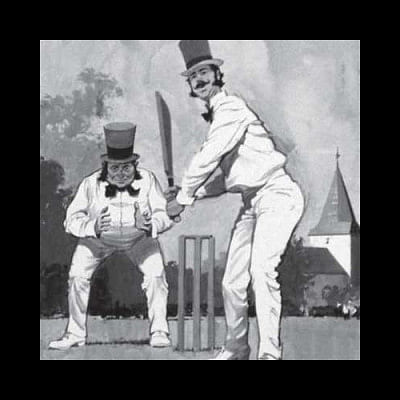T20 : CURSE OR BOON FOR ODI?

The ongoing ICC Cricket World Cup has presented us with quite a few innings with very high scores. While some attribute this to the characteristics of Australia and New Zealand grounds, some think it could be due to the effect of the Twenty 20 (T20) format on the ODIs. The shorter of the limited over game has evidently affected the longer one, but has it been for the best or not? Let's analyse.
CONS:
1. Shorter duration. A T20 match usually takes roughly 3 hours to complete, whereas ODI takes more than twice that time generally. As a result, fans are more inclined towards watching T20 matches rather than sitting through a long ODI.
2. More action in T20, meaning that we get to see more boundaries scored, and some exciting fall of wickets in the process. It is common to have a score of approximately 200 in each innings of a T20 match, where batsmen don't have to worry about a lasting partnership but rather a high score to defend. This works adversely for ODIs, which has comparatively lower scores, considering its 50 over innings. Needless to say, this adds to the adrenaline pumped element of T20 matches.
3. Due to the high monetary incentive of the T20 format, more and more young, amateur players are focusing on T20s than ODIs. T20 gives them that exposure; therefore, most of them have their eyes solely set at the shorter format of the two.
4. “No ball” by overstepping is penalised by awarding a free hit to the batsmen in T20. That is not the case in ODI. The fundamentals of outs for a no ball remain same across the formats, but those playing T20 get one extra ball to hit as they please.
PROS:
1. The teams are motivated to score higher in ODIs. If the action packed T20s have taught us anything, it is that the larger the score, the more people will love the game. And that effect can be seen in ODIs these days. Batsmen are striving harder to score more, resulting in higher overall scores. Take the current World Cup for example. We have already seen many innings where the teams have scored over 300 runs. Although not new, these high scoring matches have increased in frequency, and we love to
watch that.
2. ODI has been benefited by capable young players from T20s. T20 competitions like IPL and BPL have made it easier for selectors to choose players who are fit for the ODI format. Take Anamul Haque Bijoy for example, who came under the limelight in BPL T20, and who now regularly represents Bangladesh in ODIs.
3. ODIs have improved technologically due to T20. LED stumps and bails were introduced internationally in T20 World Cup last year, and are being used in the ICC World Cup this year in ODIs. They are pretty expensive, but they make the lives of the on-field umpires a tad easier. Similarly, spider-cams, which are regulars in T20 have also been adopted by ODIs, giving better and exciting broadcasting angles.
4. T20s have resulted in an overall increased popularity of cricket, consequently bringing more spectators to the ODI matches.
There are always two sides to an argument. Sure, T20 had some adverse effects on ODI, but it has resulted in improvements of ODIs in certain ways as specified. The T20 format of limited over cricketing therefore is not necessarily a curse for the ODIs.

 For all latest news, follow The Daily Star's Google News channel.
For all latest news, follow The Daily Star's Google News channel. 



Comments